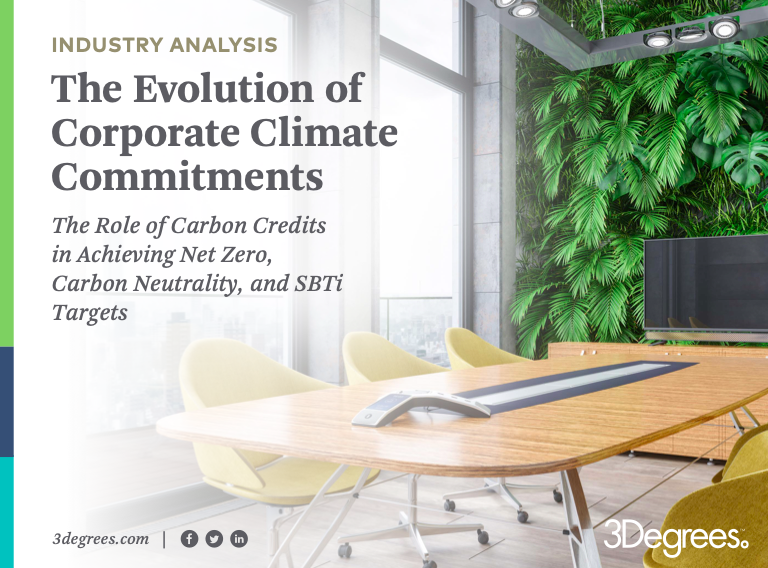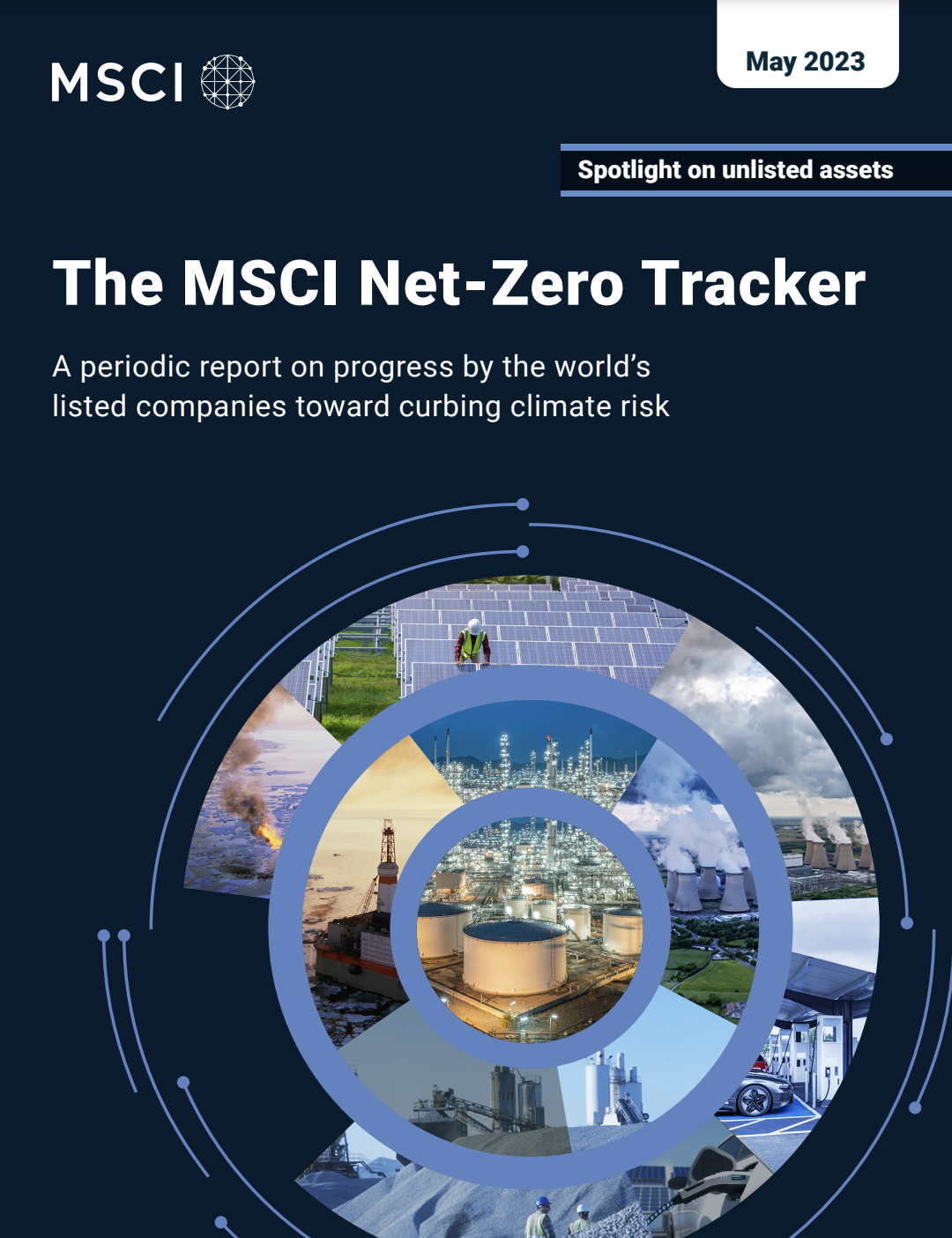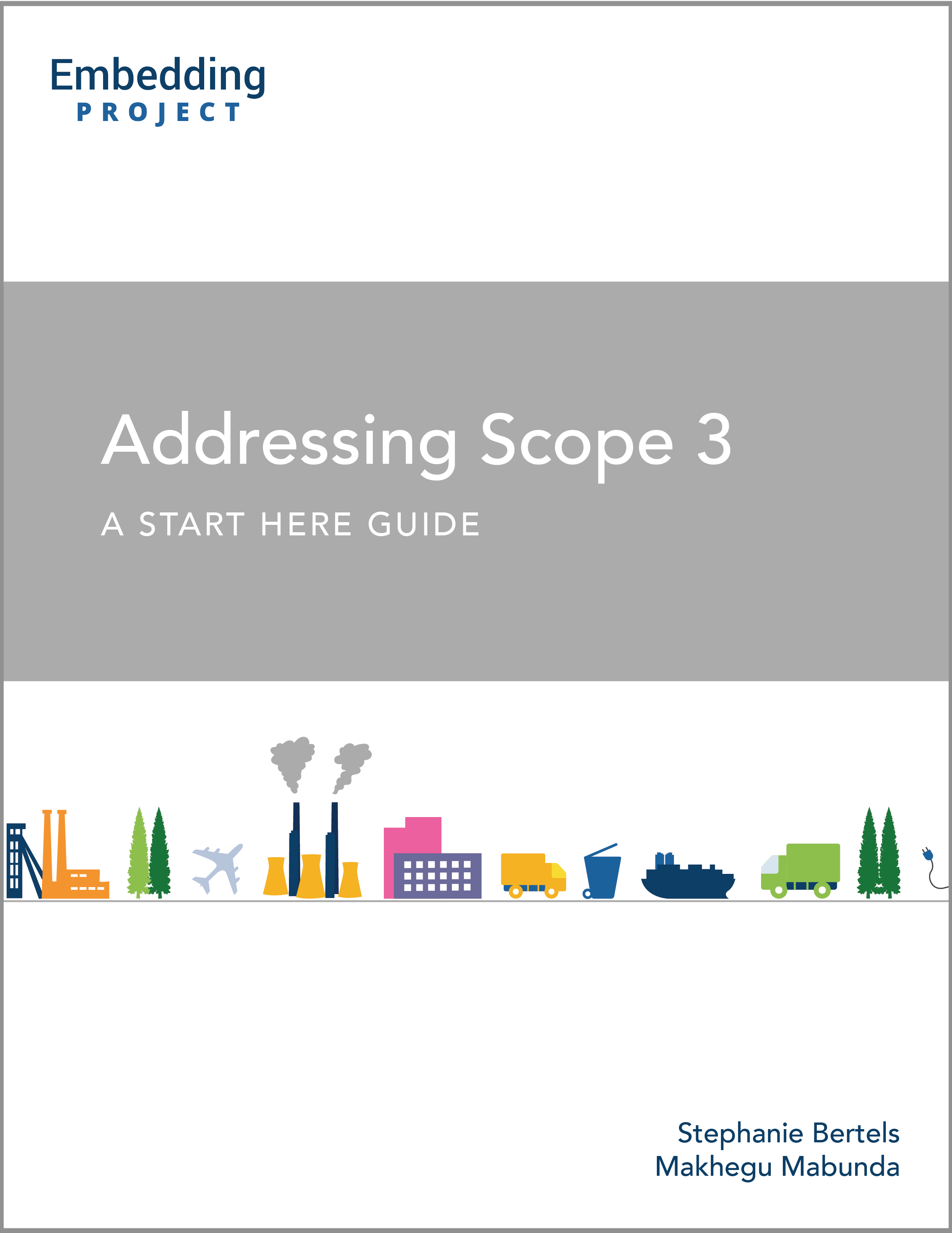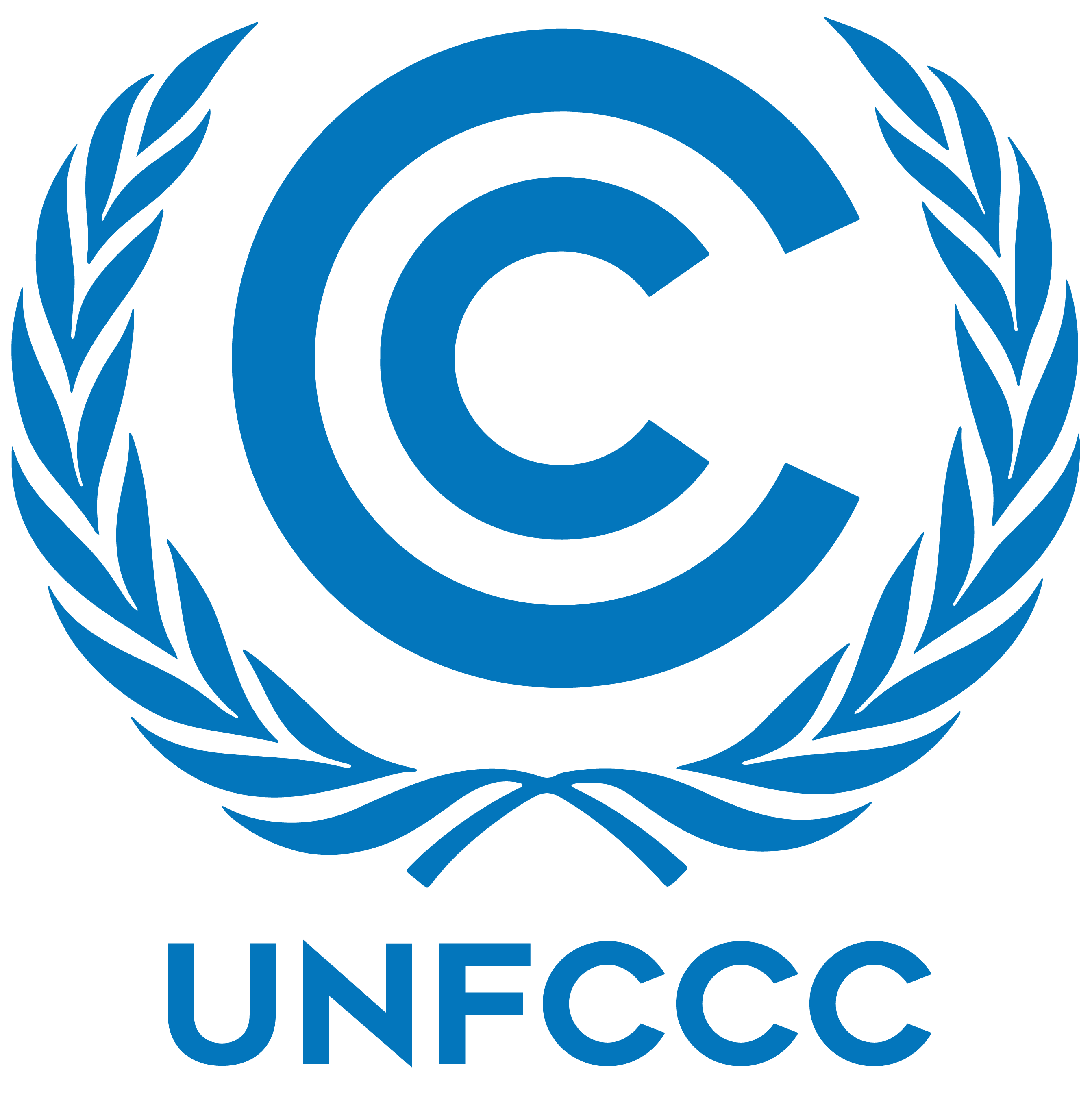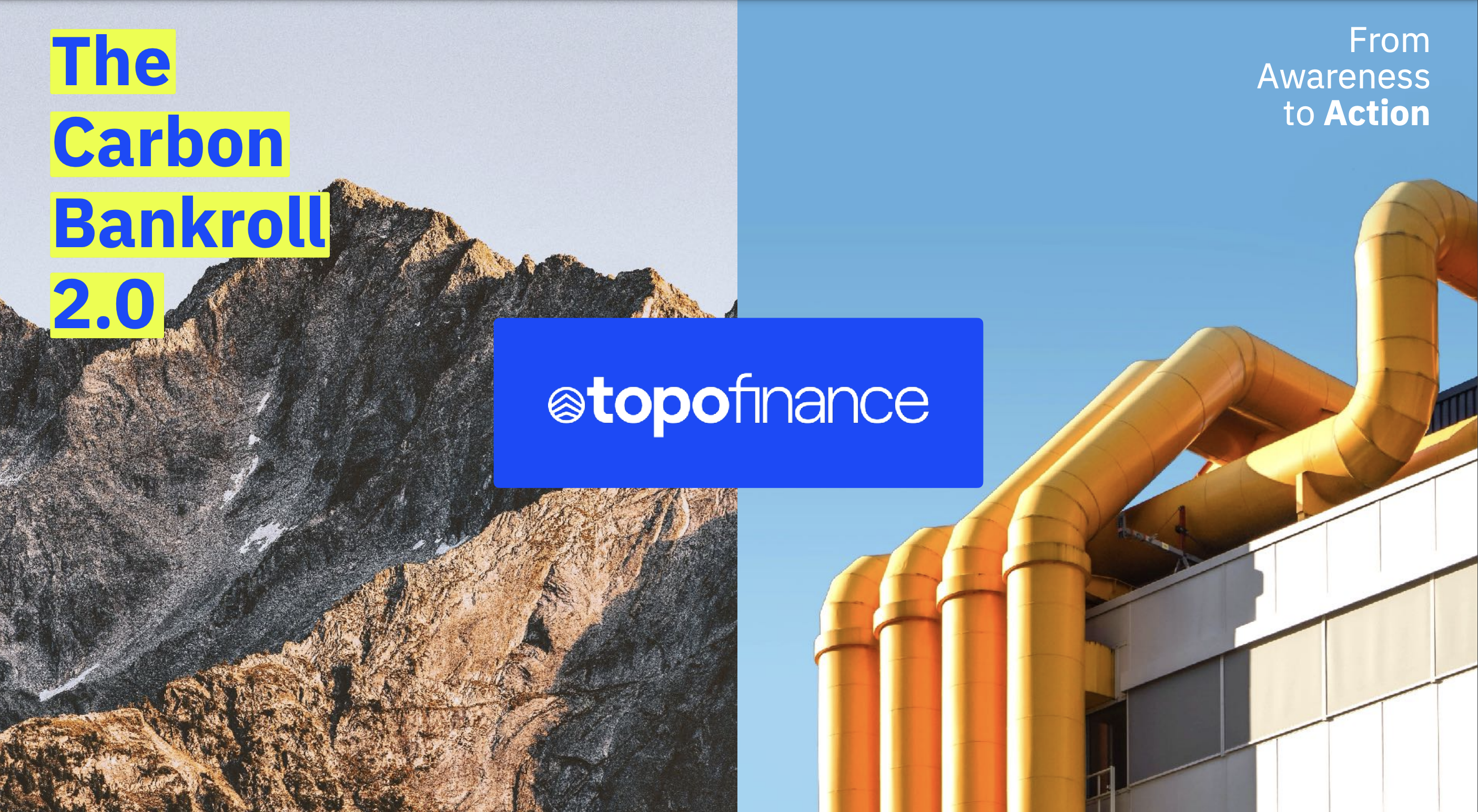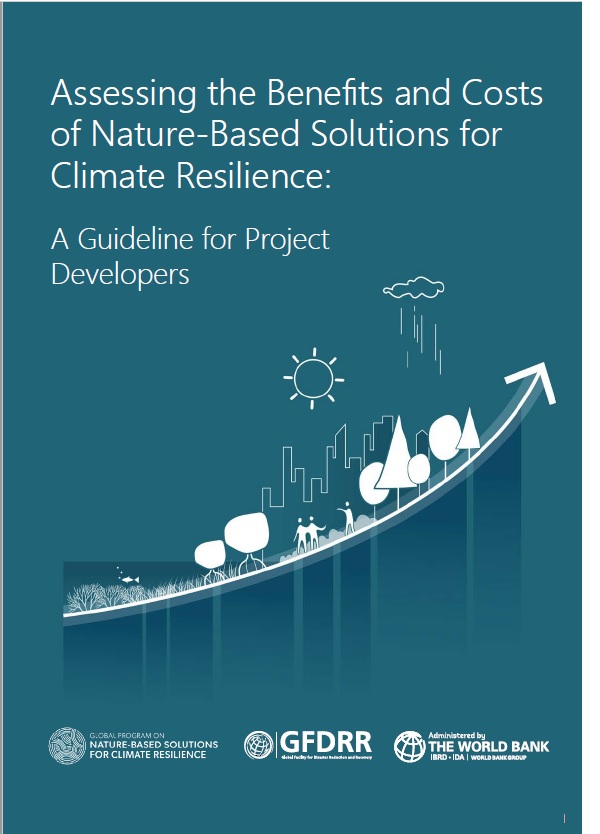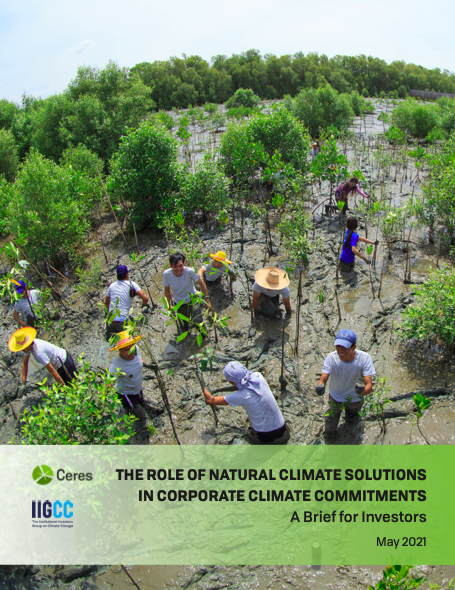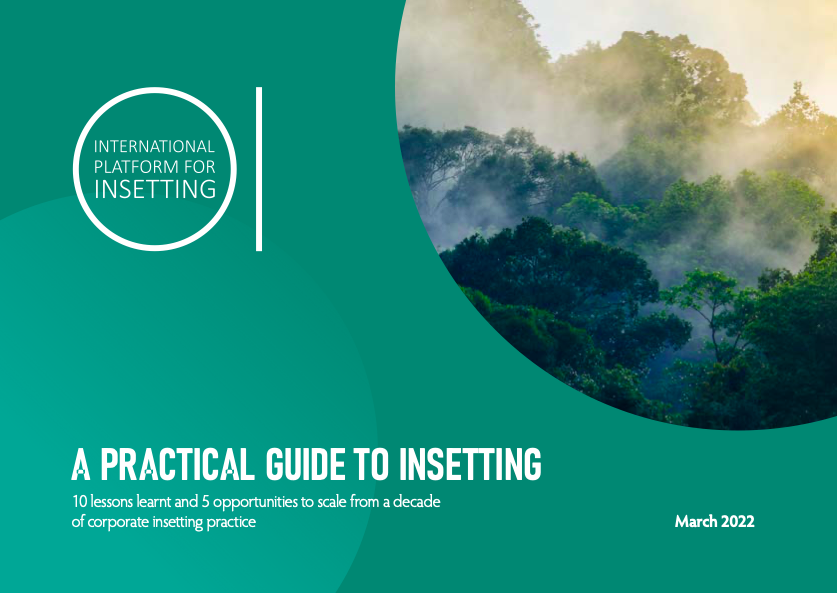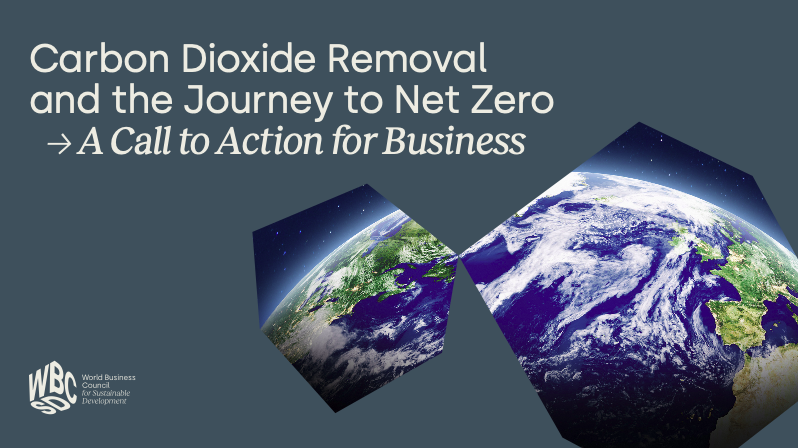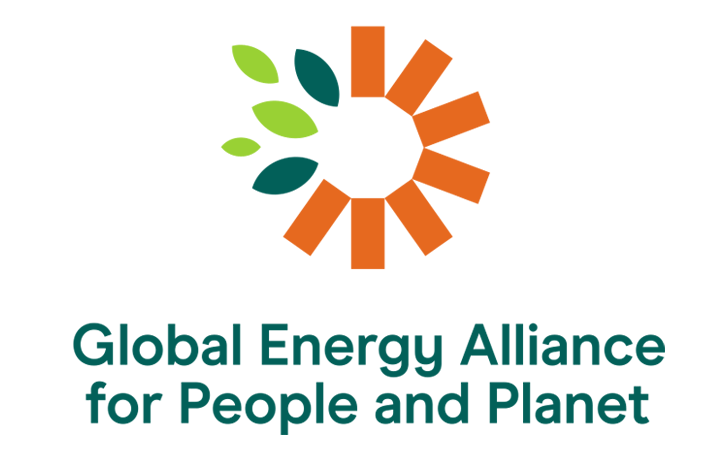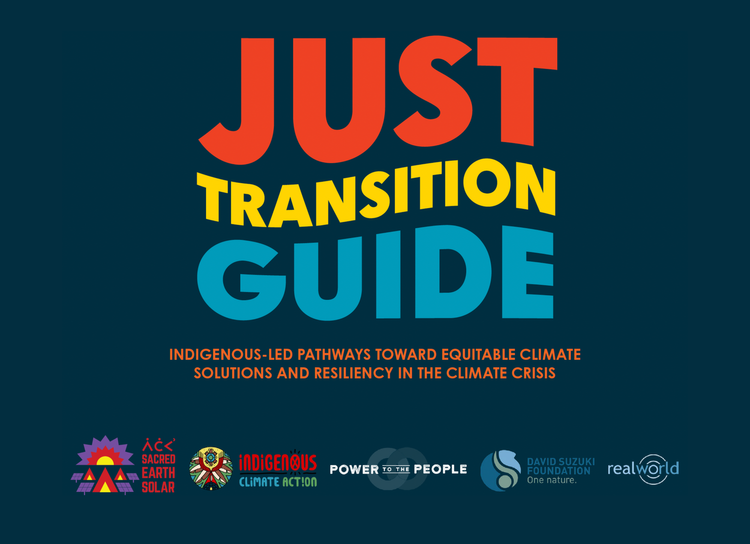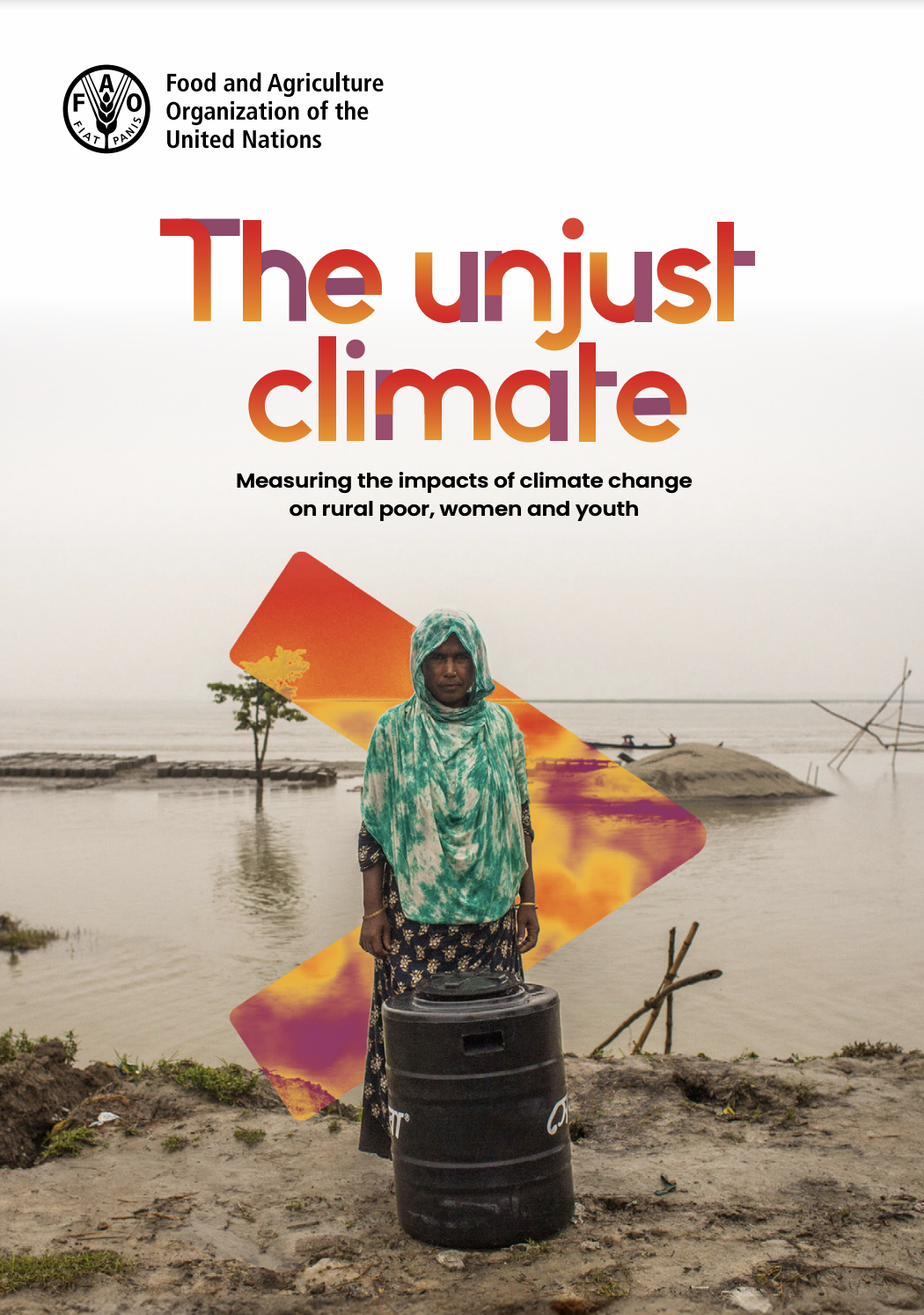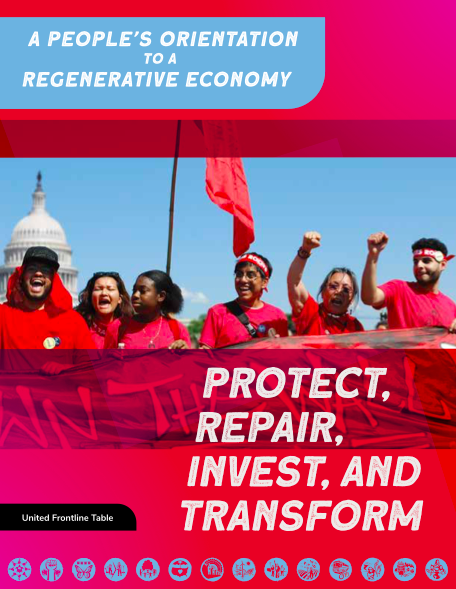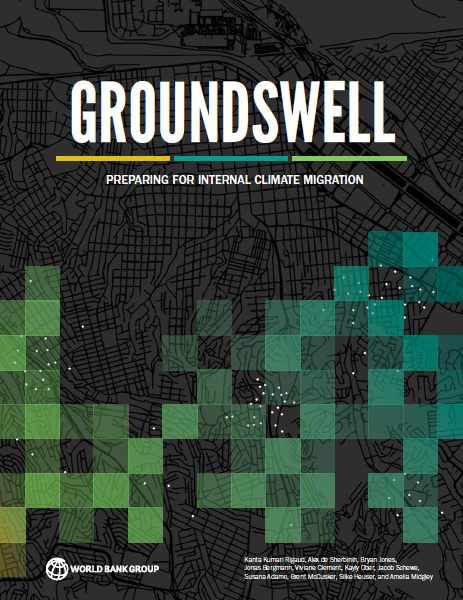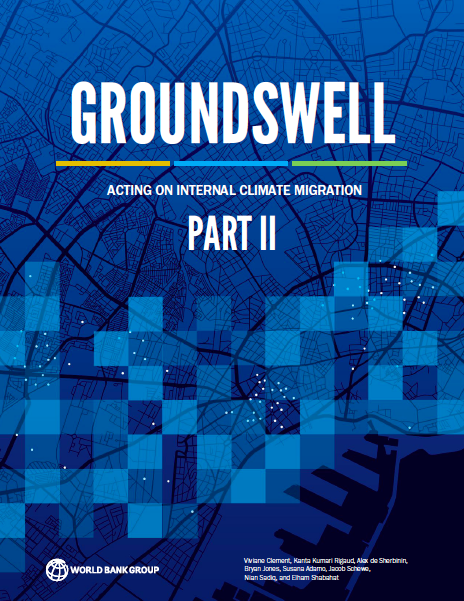Climate Mitigation (Decarbonisation and Carbon Removals)
Description
Including reducing or eliminating greenhouse gas emissions (scope 1, 2, & 3); energy efficiency; reducing energy use; renewable energy; energy storage; carbon dioxide removal; climate justice; understanding and addressing historical emissions; and loss and damage compensation.
Share this Subissue on:LinkedIn
Resources
Getting Started Guide
Climate Mitigation (Decarbonisation and Carbon Removal): A Getting Started Guide
Faced with the destabilisation of Earth’s climate system, our economy needs rapid decarbonisation. Businesses need to take urgent and credible action on climate if we are to slow down and limit the damages of global heating. Anchored in research, our Climate Mitigation (Decarbonisation and Carbon Removal): A Getting Started Guide aims to support your company develop a credible climate mitigation strategy. It helps build a foundational understanding of the issue and provides clarity on the work ahead.
Setting Targets and Commitments for Emissions Reductions
Science Based Targets
Building on the momentum of the Science Based Targets initiative (SBTi), the Science Based Targets Network (SBTN) is a collaboration of 45+ global non-profits and mission-driven organizations working together to develop guidance to set science-based targets for all of Earth’s systems. Science Based Targets has created a five-step target-setting framework that helps you to assess; interpret and prioritise; measure, set, and disclose; act upon; and track your science-based goals. They have also created sector-specific guidance and target monitoring for companies and financial institutions.
At present, Science Based Targets helps companies to develop their goals based on the latest science: SBTi specifically focuses on GHG emission reduction goals, and SBTN specifically focuses on nature positive goals, with target-setting guidance for land, biodiversity, and freshwater. Their respective websites provide comprehensive resources, cases, and support for taking credible action.
Greenhouse Gas Protocol
This is the global standard for measuring GHG emissions. The protocol was developed by the World Resources Institute (WRI) and World Business Council on Sustainable Development (WBCSD) and includes sector specific guidance and calculation tools.
The Net-Zero Standard
The Science Based Targets initiative’s (SBTi) Corporate Net-Zero Standard includes the guidance, criteria, and recommendations companies need to set science-based net-zero targets consistent with limiting global temperature rise to 1.5°C. The framework consists of four parts: 1) setting near-term interim science-based targets for rapid, deep emissions cuts, 2) setting long-term science-based targets that align with reaching net-zero at the global or sector level by 2050 or sooner, 3) neutralizing residual emissions, and 4) taking action to mitigate emissions beyond the value chain. This resource also includes specific sector guidance for setting science based targets, as well as guidance for updating and communicating targets. It should be noted that SBTi has reduced their restrictions related to acceptable carbon removal practices, including offsetting, but the document highlights that only the final 5-10% of emissions may be neutralized this way in order to qualify as net-zero. It should also be noted that SBTi is now undertaking a major revision, which will result in V2.0 of the Corporate Net-Zero Standard. Until then, businesses seeking to set SBTi-aligned net-zero targets should use the current Corporate Net-Zero Standard V1.2.
The Evolution of Corporate Climate Commitments: The Role of Carbon Credits in Achieving Net Zero, Carbon Neutrality, and SBTi Targets
New and increasingly sophisticated carbon reduction targets have emerged as organizations look to aggressively reduce their emissions. This resource from 3Degrees will help you to understand the difference between three increasingly commonly climate-related targets: carbon neutrality, science-based targets, and net zero emissions. The guide also highlights solutions for addressing unabated or residual emissions.
The World Roadmap to Net Zero by 2050
The IEA's World Roadmap to Net Zero by 2050 is essential reading for businesses directly and indirectly involved in the energy industry. This guidance will help you to understand what is needed from companies, governments, investors, and citizens to fully decarbonise the energy sector and set emissions in line with the 1.5° C target. The guide outlines what a cost-effective and economically productive pathway could look like, and explores key uncertainties, such as the roles that bioenergy, carbon capture, and behavioural changes will play in reaching net zero.
Integrity Matters: Net zero commitments by non-state entities – A briefing for board directors
This UN report sets out five key principles and ten key recommendations that can help board members to develop and implement credible and comprehensive net-zero commitments. This resource provides a holistic set of meaningful actions that companies can take, as well as key questions directors should ask.
Engaging Supply Chains on the Decarbonization Journey: A Guide to Developing and Achieving Scope 3 Supplier Engagement Targets
This guide by the Science Based Targets initiative (SBTi) will help address your value chain sustainability impacts by setting supplier engagement targets. It explains how to select suppliers, set and implement targets, and track progress. The guidance will be most useful to sustainability and supply chain management teams that are exploring or already working to reduce their organization’s Scope 3 emissions.
Achieving global climate goals by 2050: Pathways to a 1.5° C Future
This report from the ClimateWorks Foundation can help you better understand the distribution and scale of climate mitigation opportunities. Based on scenario modelling, it highlights priority areas across eight geographies and eleven sectors. This resource will be most useful to sustainability practitioners and business leaders interested in the broader context of the transition to net-zero by 2050.
Net Zero Stocktake 2024
This comprehensive report from Net Zero Tracker can help you to better understand the status and trends of net zero target setting across countries, subnational governments and companies. It features insights into the progress of whole-economy net zero target-setting and the overall performance of more than 4,000 entities on key elements of net zero intent and integrity, including all states and regions in largest 25-emitting countries in the world, all cities with more than 500,000 inhabitants, and the largest 2,000 publicly listed companies in the world. These insights will be most useful to sustainability practitioners seeking to benchmark their performance against industry peers and to learn more about the progress gap in the locations where they and their value chain members operate.
The MSCI Net-Zero Tracker
This periodic report from MSCI can help you understand the progress of large companies on mitigating climate risk. It monitors listed companies around the world and their alignment with the 1.5 °C warming threshold. It highlights leaders and laggards on corporate climate disclosures, and includes a review of both financed emissions and the economic opportunities associated with the climate transition, such as clean tech and climate investment. These insights will be most useful to sustainability practitioners seeking to benchmark their performance, highlight opportunities, and point out the remaining ambition gap in their organisation.
Climate Action 100+ Resource Hub
This resource hub from InfluenceMap’s Climate Action 100+ (CA100+) initiative can help you better understand corporate climate policy engagement. The site features a series of tools that show which organisations are contributing to - or hindering - climate policy. These include the CA100+ Company Rankings and Industry Association Rankings, with rankings determined by alignment with the Paris Agreement; Corporate Disclosure scorecards, which assesses the accuracy and credibility of corporate sustainability reporting; and Shareholder Resolutions, featuring real world investor briefings created by InfluenceMap to support shareholder voting decisions on corporate climate policy.
This set of tools was designed for investors, but they will be useful to anyone interested in benchmarking and ensuring consistency between their business’ commitments and actions on climate change.
Climate Action 100+ Net Zero Benchmark
Climate Action 100+ is an investor-led initiative led by AIGCC, Ceres, IGCC, IIGCC, and PRI, and it can help you understand the performance of the world’s largest GHG emitters toward a net zero transition. Bringing together research from the Transition Pathway Initiative, Carbon Tracker, InfluenceMap, and Rocky Mountain Institute, the Net Zero Benchmark provides an assessment of company emissions reductions, climate governance, and climate-related disclosures. It features a searchable database of over 150 company assessments, sharing key findings since 2021. This evaluation and benchmarking tool is designed for investors but will also be useful to sustainability practitioners.
The Task Force for Corporate Action Transparency (TCAT)
The Task Force for Corporate Action Transparency (TCAT) is a new initiative dedicated to strengthening the credibility of corporate climate action through transparent, verified, and third-party assurable accounting and reporting guidance. Until now, companies have been able to report numerical emissions data through frameworks like the Greenhouse Gas (GHG) Protocol or set reduction targets through initiatives like the Science Based Targets initiative. However, these frameworks lack standardised methods for companies to report the specific actions behind those reductions (e.g. transport companies replacing diesel trucks with electric vehicles, manufacturers capturing and storing carbon dioxide in underground reservoirs, etc). TCAT intends to develop, publish, and promote technical guidance and methodologies that help companies report emissions reduction and removal efforts transparently and clearly, and address gaps in financial and GHG accounting, reporting, and assurance by developing and aligning with best-in-class standards and practices
TCAT has launched two comprehensive GHG reporting frameworks. Developed through a collaboration among environmental groups, accounting experts, NGOs, business practitioners, and civil society members, the guides are designed to help companies explain exactly how they are lowering their emissions in real time, and in a way that is comparable across industries and verifiable by third parties. These guides are designed to fill an important gap in how companies measure, report on, and verify their corporate climate actions.
The first framework is Mitigation Action Accounting and Reporting Guidance (MAARG), which equips companies with tools to account transparently for the full spectrum of ton-denominated climate actions. Its multi-statement approach enables companies to report on climate actions without conflating different types of activities; MAARG’s framework allows each action to be clearly categorised and measured. Rather than consolidating all GHG-related activities into a single statement, which can obscure the distinction between actual emission reductions and accounting-only or business changes, MAARG introduces a five-statement reporting framework which supports both inventory and impact accounting: physical inventory statement, contractual inventory statement, inventory impact mitigation statement, sector impact mitigation statement, and global impact mitigation statement.
TCAT’s second new framework is the Target Accounting and Reporting Guidance (TARG), which provides structured guidance for setting voluntary climate targets, tracking progress, and communicating results. This standardised approach enables stakeholders to assess the credibility and ambition of corporate climate targets and evaluate actual performance against commitments. In the absence of a unified framework in the voluntary reporting space, TARG fills a critical gap by offering clear and consistent methods for companies to disclose climate targets and report progress in a transparent and assurable manner. The framework is built around five core reporting elements: a target commitment report, base year emissions report, mitigation action report, target accounting report, and target attainment report.
Taking Action to Reduce Emissions
Addressing Scope 3: A Start Here Guide
A guide for leaders of companies of all sizes to understand the basics of Scope 3 emissions and how companies should begin to take credible action. The guidance is anchored in the real-world experience of companies that are already navigating this journey.
Degree of Urgency: Accelerating Actions to Keep 1.5°C on the Table
This report from the Energy Transitions Commissions (ETC) assesses progress since COP26 and outlines the priority areas for accelerated action at - and beyond - COP27. The report provides a good summary of the achievements of COP26, the status of our climate budget, the credibility and quality of global climate-related commitments, and the steps required to close the 'gap' in climate-related ambition, implementation, and financing within both sectors and countries. This resource is a good starting point for executives, boards, and junior sustainability change agents that want to get up to speed on the priority areas for accelerated progress on climate action.
Accounting for Natural Climate Solutions Guidance
Natural climate solutions have been recognised as key levers in mitigating the negative impacts of climate change, with ~12% of global impacts from GHG emissions coming from land use and land-use changes (LULUC). To support you in calculating, accounting for, and reporting on LULUC-generated GHG emissions, the Accounting for Natural Climate Solutions Guidance from Quantis delivers a robust methodology to embed land-related emissions in corporate and product footprints, which can be used for setting science-based climate targets. Additionally, the supporting Annex document provides detailed information on the scope of the proposed methodology, including technical instructions, context, debated challenges, and limitations, as well as references.
Climate Action Pathways
First launched in 2019 by the UN's Framework Convention on Climate Change, the Climate Action Pathways set out sectoral visions for achieving a 1.5° C resilient world in 2050. Pathways are a living document, and will provide you with an up-to-date road map of the interim actions and key impacts needed by 2021, 2025, 2030 and 2040 to achieve the 2050 vision.
The Pathways are divided into executive summaries and action tables that cover thematic areas linked to climate change, such as energy, industry, land use, transport, and water, as well as cross-cutting themes like resilience. The summaries provide a vision of the future, summarising the needs - and milestones - for system transformation and progress to date, whereas the action tables highlight specific time-bound actions that businesses (and other relevant stakeholders) can take to deliver on 2050 vision.
Sink or swim: How Indigenous and community lands can make or break nationally determined contributions
This paper, authored by researchers from World Resources Institute and Climate Focus, examines the role of Indigenous peoples and local communities' (IPLC) lands as carbon sinks and the impact they can have in support of nationally determined contributions (NDCs) towards reducing global emissions. It explains the contributions of IPLC lands to reducing climate change; their current role in countries' current NDCs; key policy and governance gaps to achieving greater mitigation potential from IPLC lands; and recommendations for governments and international donors. This paper can help you to better understand the positive impact you can have in reducing emissions by supporting national projects that protect and grow IPLC lands.
Climate Solutions at Work
This guide from Drawdown Labs was created to "democratize" climate action by helping all employees concerned about climate change to take concrete action in the workplace. It identifies ways for employees to assess whether or not their company is taking adequate steps to address climate change; examines job functions that have untapped potential for driving action; explains how one can work with their colleagues to amplify and hasten impact; and uses the Drawdown-Aligned Business Framework to highlight key leverage points and specific actions that all business must utilize and deliver upon. This is a good introduction for any employee who is interested in and motivated to support climate action, but whose title and accountabilities may not be immediately and obviously relevant.
The Carbon Bankroll 2.0: From Awareness to Action
Building on the groundbreaking Carbon Bankroll 1.0 report, this report from Topo Finance explores the substantial climate impact of companies' banking and investment practices. It explains how - for many large businesses - corporate cash and investments are generating more emissions than all operations and supply chain activities combined; illuminates the central role that banking plays in determining our climate future; and provides valuable insights and step-by-step guidance for turning this awareness into action.
Aligning Corporate Value Chains to Global Climate Goals
This comprehensive paper from the Science Based Targets initiative (SBTi) can help you to understanding the challenges and opportunities with Scope 3 target setting. It explains the importance of Scope 3 target setting, outlines the challenges in setting and implementing Scope 3 targets, and assesses current Scope 3 target setting practices. It also explores the role of certification in addressing value chain emissions and provides a five-step approach for operationalising the proposed framework for managing value chain emissions towards net-zero transformation.
8 Steps to Enhance GHG Reporting: A Roadmap for Finance and Accounting Professionals
This guide by the International Federation of Accountant (IFAC) and We Mean Business Coalitions (WMBC) can help ensure your organisation’s GHG accounting is timely, robust, and reliable. It covers eight practical steps your CFO and finance team can take to collect, manage, and disclose GHG data according to the latest international standards.
Guidance on Avoided Emissions v2.0: Drive Innovations and Scale Solutions Toward Net Zero
There is a growing recognition of the need to scale climate solutions (e.g., products, services, technologies) in order to produce necessary system-wide change. In response, private sector sustainability claims are surging. Unfortunately, many of these claims are not credible.
This updated guide from WBCSD can help you to better assess and communicate the impact of your low-carbon solutions and portfolios – beyond the greenhouse gas (GHG) inventory footprint. This updated guide outlines a rigorous methodology for assessing avoided emissions so that strategic decisions related to climate investments are better informed. It covers seven key areas: understanding avoided emissions; validating claim eligibility; assessing avoided emissions; communicating and reporting avoided emissions; tracing and monitoring avoided emissions; leveraging avoided emissions; and implementing the guidance. These insights will be most useful to sustainability professionals, but will also have implications for other departments including finance, development, and communications.
Assessing the Benefits and Costs of Nature-Based Solutions for Climate Resilience: A Guideline for Project Developers
This report from the World Bank aims to help you make the case for investments in Nature-Based Solutions (NBS) for climate resilience. It provides a decision framework to cost-effectively quantify the benefits and costs of NBS. The frameworks includes a common set of six analytical steps and four guiding principles to help you value the benefits of NBS related to disaster risk, food production, tourism, recreation, biodiversity, health, and water quality. It also provides eight case studies to illustrate how these assessments works in practice. The framework will be useful to a number of departments that may be involved in developing NBS projects including sustainability, finance, strategy, R&D, and operations.
The Climate Drive
This platform by WBCSD features a number of tools that can support your organisation’s net zero transition. These include an Action Library that features tangible, high-impact actions and recommendations from peers, such as green energy options for your operations and ways to make use of Power Purchasing Agreements. There is also an online Readiness Check that helps you assess your current goals, policies, and practices relating to decarbonisation, and a Net Zero Guidebook designed to help you build and leverage your net zero knowledge. This set of practical resources will be most useful to sustainability teams coordinating decarbonisation plans and to the operations departments seeking decarbonisation solutions to implement.
The Ocean as a Solution to Climate Change: Updated Opportunities for Action
This detailed report, produced by the High Level Panel for a Sustainable Ocean Economy (Ocean Panel), can help change agents understand the range of available and scalable ocean-based climate solutions. It highlights current and emerging opportunities to reduce greenhouse gas emissions in ocean-based sectors, including ocean-based renewable energy, food, carbon capture and storage, and more. It also outlines how the technology and infrastructure needed to implement these solutions can be financed within the unique context of each ocean-based sector.
The Low Carbon Lifestyles Wheel: Behaviors, Barriers, and Benefits
This paper from Futerra, BEworks, and WBCSD can help you promote the adoption of lower-carbon lifestyles. It is based on an “Action Wheel” framework that presents four categories of individual-level action: transportation, housing, diet, and purchases. Each category is broken down into outcomes, such as “Live car-free” or “Local Food”. Each of these outcomes is then further divided into specific actions. The paper also provides guidance on addressing the many potential barriers to each action. This practical tool will be useful to anyone seeking to foster sustainability-related behaviour change among employees.
Blue Ambition Loop: Achieving Ambitious 2030 Ocean-Climate Action
This brief produced by the UN High-Level Climate Champions group can help raise your awareness of ocean-based climate solutions and the role of businesses and other non-state actors in applying them. It provides a snapshot of commitments and actions being taken on six topics: ocean ecosystems conservation, marine transport, ocean energy, ocean food, ocean tourism, and ocean finance. This resource will be most useful to sustainability and supply chain practitioners.
The “No-Excuse” Opportunities to Tackle Scope 3 Emissions in Manufacturing and Value Chains
This white paper from the World Economic Forum provides a practical road map that can help you to accelerate your Scope 3 emissions reduction efforts. Published as part of the Industry Net Zero Accelerator Initiative, it explains the "what, why, how" of Scope 3 emissions; highlights key challenges to acceleration Scope 3 decarbonisation; and highlights twelve "no-excuse" opportunities for tackling these emissions across four action levels: the company level, the value chain, industrial systems, and broader society. These opportunities address both the Scope 3 calculation and abatement aspects and are complemented by 18 real-world case studies from early movers.
The State of Carbon Dioxide Removal: A global, independent scientific assessment of Carbon Dioxide Removal
This comprehensive report is a global assessment of the state of progress of carbon dioxide removal (CDR) and the gap we need to close to sustainably limit temperature increase in line with with the Paris Agreement. It explains what CDR is and why it is necessary for; explains patterns in investment, innovation, and expansion within the field of CDR; provides Paris-consistent CDR scenarios; explores key topics such as monitoring, reporting, and verification; and more. This report will be particularly beneficial to sustainability professionals and senior leaders who are exploring CDR of the voluntary carbon market.
The Climate Action Monitor 2024
This annual flagship report from the International Programme for Action on Climate (IPAC) can help you understand country-level trends and progress on climate action, as well as the costs of climate impacts across 51 OECD and OECD partner countries. The first section looks at how far countries are from achieving national and global GHG mitigation objectives, and it finds that countries must increase their ambitions significantly. The second section shows that extreme weather is becoming the norm at great cost, outlining population exposure to economic losses from heat, fires, storms, and floods. The third and final section provides a snapshot of key developments in climate policies in 2023 and shows that national climate policy action increased from 1% in 2022 to 2% in 2023, but is well short of the 10% average expansion between 2010 and 2020. This national-level overview offers useful context for both sustainability practitioners and business leaders.
Corporate Investments to Achieve Climate Ambitions
This report from the UNGC and the CFO Coalition for the SDGs can help you to understand the importance of corporate investments and financing for climate action. The report provides guidance and insights for companies across the industry spectrum to build a bridge between climate ambitions and corporate investment and finance. It summarises the CFO Principles, a four-pillar framework for climate action, and explains corporate climate investment; the state of play in relation to corporate investments in mitigation; and innovations for scaling corporate investments in mitigation. This resource will be especially beneficial to sustainability and finance professionals.
Accelerating decarbonization by aligning the efforts of business and finance
This insight paper from WBCSD and leading financial actors can help you to better understand the links between avoided emissions and transition finance. The paper aims to demonstrate the added value of avoided emissions perspectives in the context of sustainable finance and net-zero emissions trajectories; provide practical guidance on how companies and investors can leverage avoided emissions perspectives across asset classes; discuss good practices and current challenges in avoided emissions assessments, attribution, and reporting; and explore the current regulatory and (voluntary) standards landscape for financial actors and companies in the avoided emissions context.
Removing carbon responsibly: A guide for business on carbon removal adoption
Achieving net zero by 2050 and avoiding the worst consequences of climate change requires carbon dioxide removal (CDR) from the atmosphere. This guide from WBCSD provides practical direction for sustainability professionals to develop effective CDR investment strategies. It outlines seven key principles for responsible CDR investments; provides an overview of common CDR methods; and features a decision-making framework that can help you to evaluate different CDR methods based on company-specific preferences. A complementary excel tool is provided to help companies tailor their own assessments.
Offsetting, Insetting, and Carbon Markets
The Core Carbon Principles
The Core Carbon Principles (CCPs) are a global benchmark that provide a credible and rigorous means of identifying high-integrity carbon credits. The CCPs were created by the Integrity Council for the Voluntary Carbon Market (ICVCM) to help standardise the quality of carbon credits sold on the voluntary market, and were developed through global cooperation from hundreds of key stakeholders and organisations throughout the voluntary carbon market. These 10 principles can help your company to better assess the quality of carbon credits and to ensure that your purchases are having real and verifiable impact on the climate.
The ICVCM has also created a guidebook that features a summary for decision-makers, which presents their assessment framework; their recommended assessment procedure; and an overview of the CCPs and their implementation through the assessment framework.
Oxford Principles for Net Zero Aligned Carbon Offsetting (revised 2024)
The Oxford Principles can help improve the emissions reduction outcomes of your carbon offsetting strategy. The Principles focus on four main elements for credible net-zero aligned offsetting:
Cut emissions, ensure the environmental integrity of credits used to achieve net zero, and regularly revise your offsetting strategy as best practice evolves
Transition to carbon removal offsetting for any residual emissions by the global net zero target date
Shift to removals with durable storage (low risk of reversal) to compensate any residual emissions by the net zero target date
Support the development of innovative and integrated approaches to achieving net zero
It also defines key terms and targets and explains types of projects available in today's carbon markets.
Claims Code of Practice: Building integrity in voluntary carbon markets
Recent questions about the credibility of voluntary carbon credits threatens their potential to fill financing gaps for climate mitigation. In response, the Voluntary Carbon Markets Integrity initiative (VCMI) has worked with existing standard-setters to create a code of practice that brings clarity to what a high quality credit looks like.
The Claims Code can help businesses make credible use of carbon credits in their climate commitments. The Code provides a practical, detailed, 4-step process: 1) Comply with the Foundational Criteria, 2) select a VCMI Claim to make, 3) meet the required carbon credit use and quality thresholds, and 4) obtain third-party assurance following the VCMI Monitoring, Reporting & Assurance (MRA) Framework. The guidance will be most useful to sustainability teams or anyone involved in purchasing credits from the voluntary carbon markets.
Reforming the voluntary carbon market
This white paper from Compensate is a good starting point for better understanding the voluntary carbon market and the steps required to achieve greater impact with carbon capture projects. It explains the current state of the market and highlights the most common flaws in carbon capture projects. It also introduces Compensate's project evaluation criteria, and explains how to apply it in practice.
The Role of Natural Climate Solutions in Corporate Climate Commitments: A Brief for Investors
Nature-based carbon offsets - also known as natural climate solutions (NCS) - can be an effective part of a company's mitigation efforts. However, it can be difficult to know where to begin, or how to exercise due diligence to ensure that the solutions you support are credible. This brief provides introductory guidance for institutional investors on the use of NCS in corporate climate strategies. It can help you to better understand the role of natural NCS for pursuing net-zero emissions, and how to better evaluate the quality of nature-based carbon credits.
A Practical Guide to Insetting
Insetting refers to a company offsetting its emissions through projects that avoid, reduce, or sequester carbon within its own value chain. It is an opportunity for businesses to link emissions and carbon sequestration to their sourcing landscapes. This guide from the International Platform for Insetting shares insights and provides recommendations that will help you to transform your supply chain for a resilient, regenerative, net zero carbon future that values and protects nature. The guide was created specifically for insetting practitioners and stakeholders that want to learn more about the concept, and it highlights lessons and opportunities for realising the full potential of insetting.
A buyer's guide to high-accountability MRV
Carbon180 has created a simple matrix to highlight the difference between high-accountability and low-accountability actions related to measuring, monitoring, reporting, and verifying (MMRV) the results of carbon removal projects. This is a good starting point for senior leaders that are exploring carbon offsetting as part of their organisation's mitigation strategy and want to build accountability and trust with carbon removal project developers.
A Buyer's Guide to Natural Climate Solutions Carbon Credits
This guide produced by the Natural Climate Solutions Alliance, WBCSD, and BCG is designed to help companies select and procure high-quality carbon credits on the voluntary carbon market. It focuses specifically on natural climate solution (NCS) credits, which are intended to support carbon reduction while also providing co-benefits for communities and biodiversity. Going step-by-step, the guide outlines how to integrate NCS carbon credits into your climate strategy. This includes setting procurement criteria, finding sources, purchasing, and reporting credible claims. The guidance will be most useful to sustainability and procurement teams.
How to Kick-Start the Carbon Removal Market: Shopify’s Playbook
Shopify spent the past year exploring and growing the carbon removal market, and they created this playbook to share their journey and learning outcomes. This guide provides experiential insights, tangible steps, tools, and templates that will help you to fund the right types of climate solutions; be flexible with purchases to maximise impact; and identify the most promising carbon removal companies. If your company wants to contribute to a net zero future through carbon removal but is leery of costly mistakes, we recommend this as early essential reading.
Carbon removal and avoidance: a buyer’s guide
This concise guide from Watershed (a carbon credit marketplace) can help you to identify credits that have meaningful impact. It begins by explaining the nuanced yet important difference between carbon avoidance and carbon removal. It then outlines the key features of high-quality avoidance projects, and describes two main categories of carbon removal: “nature-based solutions” and “permanent carbon removal solutions." This guide may be useful as a quick introduction to offsetting for sustainability and finance departments that are looking to purchase offsets of the first time.
How to choose carbon offsets that actually cut emissions
This article from MIT Sloan will help you to understand whether or not the carbon offsets you purchase are actually cutting emissions. It outlines a simple four point framework that assesses if the offset is Additional, Verifiable, Immediate, and Durable (AVID+). Each point must be met for an offset to be credible. When these minimum requirements are met, offset purchasers should also look for projects with additional societal benefits (the “plus” of AVID+). This framework will be most useful to sustainability teams and anyone else involved in purchasing carbon offsets.
Insetting and Scope 3 climate action: applying and accounting for Natural Climate Solutions (NCS) in land sector value chains
This brief from WBCSD can help you to better understand the emerging practice of insetting is and why it is especially important in land sector value chains. The paper defines insetting; outlines how the GHG Protocol’s draft guidance is accounting for insets; and describes the business case for insetting and the need to harmonise insetting definitions and accounting. The guidance will be most useful to sustainability practitioners and supply chain managers working in agriculture and forestry, or in other industries with significant land use.
Mind the Gap: How Carbon Dioxide Removals Must Complement Deep Decarbonisation to Keep 1.5°C Alive
This briefing paper from the Energy Transitions Commision (ETC) will help you to understand that carbon removals must play a role in climate change mitigation strategies in addition to rapid decarbonisation, starting today.
The paper provides a comprehensive description of how ambitious development of cardon dioxide removal (CDR) solutions - combined with ambitious decarbonisation - could prevent 'overshoot' of the 1.5°C carbon budget by 2050. It covers climate targets and the implications for carbon budgets; emissions reduction scenarios and the size of the overshoot gap; types of CDR and their feasible scale by 2050; the risks involved for each type of CDR and how to manage them; an examination of who should pay for removals, and how; and the actions needed in the 2020s to ensure subsequent removals occur at the necessary pace and scale.
Mapped: The impacts of carbon-offset projects around the world
This tool created by Carbon Brief maps out the locations of carbon offset projects that have created negative impacts. It can help you to understand how these negative impacts manifest, the locations where they are most likely to occur, and their prevalence. The map also highlights the tendency for offset measurements to be overestimated. This resource provides important insights for community relations teams, sustainability teams, and for anyone involved in procuring offsets.
The Evolution of Corporate Climate Commitments: The Role of Carbon Credits in Achieving Net Zero, Carbon Neutrality, and SBTi Targets
New and increasingly sophisticated carbon reduction targets have emerged as organizations look to aggressively reduce their emissions. This resource from 3Degrees will help you to understand the difference between three increasingly commonly climate-related targets: carbon neutrality, science-based targets, and net zero emissions. The guide also highlights solutions for addressing unabated or residual emissions.
Being Positive about Negative Emissions: Incorporating carbon removals into net zero strategies
Earth is expected to surpass the 1.5 °C degree warming threshold within a decade. Scaling up greenhouse gas (GHG) removals are one approach to mitigate this global risk. This report written by the Coalition for Negative Emissions provides an overview of emerging GHG removal industries and how your business can play a role scaling them. It argues for the importance of GHG removals in limiting global warming and outlines key processes for removing emissions from the atmosphere. It then explains why GHG removal is essential for hard-to-abate emissions, and outlines why corporate net zero plans should include GHG removals.
Voluntary Carbon Markets: Potential, Pitfalls, and the Path Forward
This guide can help you develop a grounded understanding of the controversial topic of carbon credits and their role in mitigating the climate crisis. Developed by the Climate Crisis Advisory Group (CCAG), an independent NGO whose members include leading earth system scientists such as Johan Rockstrom and Mark Maslin, the report examines the current state of Voluntary Carbon Markets (VCMs), exploring how carbon credits are used and why they have suffered a loss of confidence. The report is then divided into five numbered sections: the first, “Market basics," explains how VCMs work and their theoretical power to shift money directly to where it is most needed, and sections two through five break down the specific issues and challenges with VCMs. The final section also provides recommendations for ensuring that scientific rigour and transparency are built into VCMs so that their potential can be realised in the future. This resource offers a clear, comprehensive, and balanced view of carbon credit usage that will benefit a broad range of sustainability professionals, and especially those involved in purchasing carbon credits or developing carbon removal projects.
State of the Voluntary Carbon Market 2025
This report from Ecosystem Marketplace can give you an overview of the global voluntary carbon market from a carbon market industry perspective. Using interviews and other data collected from project developers and credit resellers, it reviews market activity for the past year, such as trends in supply and demand across regions and credit types. It also looks ahead to important developments shaping the future of the voluntary carbon market. This resource will be especially beneficial to sustainability practitioners, and anyone involved in purchasing carbon credits.
State of the Voluntary Carbon Market: 2024
This concise report from Carbon Direct can help you to better understand key trends and developments in the voluntary carbon market and the carbon dioxide removal (CDR) market. This resource will be especially beneficial to carbon credit purchasers, carbon project developers, and policymakers.
The Climate Action Protocol: Navigate the Complexity To Make Confident Climate Claims
This resource from Climate Impact Partners can help you to navigate the growing range of frameworks and guidance on climate action claims. The protocol compares Climate Impact Partners’ CarbonNeutral certification; ISO’s 14068 Carbon Neutral Standard; ISO’s Net Zero Guidance; SBTi’s Net Zero Standard; and VCMI’s Carbon Integrity Claim. It also provides tools to compare and contrast requirements in order to make the right choice for your business. This resource is a good starting point for sustainability professionals that want to build a better understanding of these initiatives.
Nature-based Solutions for corporate climate targets
This guide by the IUCN can help you understand what Nature-based Solutions (NbS) are and how they contribute to net zero and nature positive goals. It has three sections that cover the role of NbS in climate change mitigation, corporate climate strategies, and achieving societal net zero. It is also features illustrative graphics. This guide will be most useful as an overview or introduction to NbS for sustainability professionals and others.
Carbon Offsets Are More Popular than Ever, and That’s a Problem
The demand for carbon offsets has never been greater, and their legitimacy as an effective tool for stopping climate change has never been more tenuous. This is the first entry in a three-part series that explains carbon offsets and their viability as a credible solution for reducing emissions. In this instalment, we unpack carbon offsets and carbon credits and explain why the market for carbon offsets is growing.
Buyer, Beware: How to Navigate the Carbon Offset Market
This is the second entry in a three-part series about carbon offsets and their viability as a credible solution for reducing emissions. In this instalment, we look at the most common issues with carbon offsets (with a focus on nature-based offsets) and highlight key considerations and actions you can take to better ensure that your offset investments are effective and credible.
Enter, Insetting: Supporting Carbon Reduction in Your Value Chain
In the third and final instalment of our blog series on carbon offsets, we offer an alternative to offsetting: insetting your emissions within your own value chain. We highlight how carbon insetting can help you reduce your carbon emissions profile while also supporting your value chain members and advancing climate justice.
Guidelines for High Integrity Use of Carbon Credits
80% of the world’s largest companies have not yet set climate targets, and most that have targets are off track. As a result, there is a widening gap between the 1.5°C pathway and climate action. This guide by the International Emissions Trading Association (IETA) argues that voluntary carbon market (VCM) investment is essential to keeping companies’ targets on track and closing the emissions gap. The guide provides six guidelines designed to help you make carbon credits part of a decarbonisation strategy: 1) demonstrate alignment with the Paris agreement; 2) quantify and disclose emissions; 3) establish a net zero pathway; 4) use carbon credits in addition to emissions reductions; 5) vet credit integrity; and 6) disclose the use of credits. This resource will be most useful to sustainability practitioners and strategy teams.
2025 Criteria for High-Quality Carbon Dioxide Removal
This report by Carbon Direct and Microsoft can help you understand what high-quality carbon dioxide removal (CDR) project criteria look like. The report presents a set of essential principles that are intended to help characterise high-quality CDR projects and provides specific criteria for multiple types of CDR projects, including afforestation, reforestation, and revegetation; soil carbon; mangrove forestation; improved forest management; enhanced rock weathering in croplands; biomass carbon removal and storage; abiotic marine carbon dioxide removal; carbon mineralisation; and direct air capture. For each type of CDR project, the report addresses social harms, benefits, and environmental justice; environmental harms and benefits; additionality and baselines; measurement, monitoring, reporting, and verification; durability; and leakage. This resource will be most useful to sustainability and procurement practitioners engaged in procuring CDR.
Natural Climate Solutions for the Voluntary Carbon Market: An Investor Guide for Companies and Financial Institutions
This guide from ERM, WBCSD, and the Forest Investor Club provides insights that can help you to better identify and invest in natural climate solution (NCS) projects. It highlights the questions that investors should ask; common challenges they may face; and examples of best practice across key stages in the NCS investment process, including planning for investment, due diligence integrity evaluations, data collection, and disclosure.
Global Carbon Markets Hub
This public database of carbon market information can help you better understand voluntary carbon market trends and make more informed decisions. Created by Ecosystem Marketplace (EM) to increase market transparency, the database features four sections available to unregistered users. The ‘Home’ and ‘Categories’ sections provide data on carbon credit volume and price data across time, geographies, and countries. The ‘EM Taxonomy’ section offers an overview of the many types of carbon credit projects, grouping them into eight broad categories, each featuring a number of project sub-categories. Lastly, the ‘Projects’ section contains a list of 20,000+ carbon credit projects from over 100 countries. This listings include information on project name, category, country, third-party standard, and in some cases the quantity of credits issued and retired. This resource will be useful to those involved in purchasing carbon credits, including sustainability, procurement, and finance teams.
The Land Gap Report
This report from the Climate Resource can help you understand how national net zero climate commitments rely on unrealistic amounts of land-based carbon removal. While it focuses on the climate mitigation approach of national governments, these insights are also relevant to business. It shows that there is generally a misguided emphasis on offsetting climate impacts, primarily through tree planting, while the irreplaceable value of primary forest ecosystems is neglected. Alternatively, it emphasises that protecting and restoring primary forests is the most effective land-based mitigation action. It also highlights that mitigation activities lack attention to the power relations between Indigenous Peoples and local communities living on the lands involved. Finally, it demonstrates that transitioning from emissions-intensive industrial agriculture to agroecology is essential to advancing climate change adaptation and mitigation. These insights will be useful to anyone involved in climate mitigation activities, such as sustainability, finance, and strategy teams.
How-to guide for voluntary carbon credit portfolio design
This report from WBCSD explains how a portfolio approach to acquiring voluntary carbon credits can help businesses to balance their carbon credit strategy. The report explains the role of voluntary carbon credits in reaching global net-zero emissions; explains the benefits of taking a portfolio approach; and provides detailed, step-by-step guidance for businesses seeking to create a portfolio that effectively utilises high-integrity voluntary carbon credits to fund activities that go beyond their value chains to reduce or remove emissions.
Carbon Dioxide Removal and the Journey to Net Zero – A Call to Action for Business
The science is clear: decarbonising the economy is essential to limiting global warming. However, reducing emissions alone cannot get us to net zero. Mitigation must be complemented by carbon dioxide removal (CDR) to address hard-to-abate emissions. This publication from WBCSD issues a call to action for business, explaining both the need for urgency and the business value in participating in the CDR market today. It features insights from sixteen organisations (from across the industry spectrum) around CDR and the journey to net zero, which are presented as factsheets that highlight the what, the why, and the how of CDR within these organisations.
Natural Climate Solution Carbon Credits: The role of project developers and communities
This guide from the Natural Climate Solutions Alliance (NCS Alliance) can help you to understand the steps taken by natural climate solution (NCS) project developers and communities, from project idea identification all the way through to the issuance of credits. Drawing on the experiences and insights of project developers, NGOs, and communities associated with the NCS Alliance, the guide explains how delivering emissions results through NCS projects is a long-term, complex, and technical process that requires collaboration between a project developer with scientific and operational expertise; investors with a long-term outlook and financial resources; and the communities that own the land or will be directly affected by the project activities. This resource will benefit any professional that wants to learn more about the origination of NCS credits.
Renewable Energy Development
Including adopting and encouraging renewable energy options.
Just Transition and Renewable Energy: A Business Brief
This business brief from the United Nations Global Compact outlines how your business can support public Just Transition policies. The authors acknowledge that business has a key role to play in ensures that the transition to the low carbon economy is just. The brief provides ten recommendations for how business can support the transition through their policy advocacy. This guidance will be most useful to your Government Affairs or Public Policy team.
Fossil Fuels in Transition: Committing to the phase-down of all fossil fuels
This in-depth, scenario-based report from the Energy Transitions Commission (ETC) can help you understand what technologies and supporting policies are needed to decarbonise the global economy. It highlights the policies required to reduce fossil fuel demand; the role of different clean energy technologies in replacing fossil energy; and the role of carbon capture and removals. There is also a sectoral breakdown outlining where emissions reductions are most needed. This high-level overview of a global energy transition will be most useful to business leaders, strategy teams, and sustainability practitioners seeking to find out how their organisation fits in the global transition towards renewable energy development.
Global Energy Alliance for People and Planet
The Global Energy Alliance for People and Planet (GEAPP) is an alliance of philanthropy, local entrepreneurs, governments, and technology, policy, and financing partners that support a clean energy transition and ensuring universal energy access. They have produced a range of reports to support your understanding of key renewable energy topics, such as how the power system can be transformed in energy-poor countries and the job creation potential from a green power transition. Their flagship report, Powering People and the Planet, is a good resource for understanding the global challenge of ending energy poverty and the steps required to ensure a just energy transition.
The Clean Energy Buyers Institute (CEBI)
The Clean Energy Buyers Institute (CEBI) is a non-profit organisation that produces and curates resources that can help you understand innovative clean energy market solutions. Their resources include toolkits, explainers, and research on topics such as advancing grid decarbonisation and clean energy procurement. They have also curated a range of relevant resources. This platform will be most useful to Procurement, Operations, and Sustainability teams, or anyone responsible for energy purchasing.
Building Trust through an Equitable and Inclusive Energy Transition
This white paper from the World Economic Forum can help you understand why addressing the socioeconomic implications of the energy transition is essential for its viability. Divided into four parts, the paper outlines the complexities involved in advancing an equitable and inclusive energy transition; highlights the emerging signs of an unjust transition; identifies the underlying challenges of building trust and finding common ground between diverse stakeholders; and explores how regulations and effective capital mobilisation can enable workforce reskilling, distributed renewables development, and low-carbon innovation. These insights will be most useful to business leaders investing in the energy transition.
Strategies for Affordable and Fair Clean Energy Transitions
This comprehensive, evidence-based report from the International Energy Agency (IEA) offers a big-picture perspective on the costs, benefits, opportunities, and challenges of a rapid clean energy transition. The report explains how a clean energy future would be more affordable while also detailing the challenges that come with financing the transition at the level of government, households, and the private sector. It explores the policies needed to share the costs of the transition fairly, examines the risk of price shocks (drawing on historic examples and potential future risks), and provides guidance on how to safeguard against shocks that may compromise the affordability and fairness of the energy transition. These insights have important implications that will be most relevant to business leaders, strategy teams, and sustainability teams.
Tracking SDG7: The Energy Progress Report, 2024
This comprehensive progress report by the International Energy Agency (IEA) and other agencies can help you understand where progress has been made and where it is off track to meet the 2030 goal of SDG 7. The first five chapters review progress trends across key indicators (access to clean fuels and technologies for cooking, renewables, energy efficiency, and international public financial flows to developing countries in support of clean energy); chapter six provides an outlook for SDG 7; and chapter 7 provides and indicators for tracking progress towards SDG 7 across targets. This resource will be most useful to sustainability practitioners interested in a statistical overview of global trends in energy and their alignment with international climate and development goals.
Just Transition Guide: Indigenous-led Pathways Toward Equitable Climate Solutions and Resiliency in the Climate Crisis
The global transition towards renewable energy is an important opportunity for Indigenous Communities to choose their own future. This resource from Sacred Earth Solar (SES) and others can help you understand how renewable energy projects can enable a Just Transition for Indigenous Communities. It explains the current challenges related to the Canadian energy and electricity systems and how they can be improved to support decentralised renewable energy projects. It showcases different pathways for developing community-based renewable energy systems such as solar, wind, small-scale hydro, and explains key considerations and learnings from communities that have already implemented them. This resource also explores other community solutions for a Just Transition, such as, food sovereignty, and reimagines how government policy can support these efforts. The lessons here will be most useful to sustainability and community relations teams whose organisations work with - or impact - Indigenous communities.
World Energy Outlook 2025
This annual report from the International Energy Agency can help you better understand trends in global energy use. It outlines three main long-term scenarios, exploring how different energy futures might impact energy security, affordability, and sustainability. Two of these scenarios set starting conditions and then examine where they lead – the "Current Policies Scenario (CPS)" and the "Stated Policies Scenario (STEPS)." A third, the "Net Zero Emissions by 2050 (NZE) Scenario," maps out a pathway to achieve specific energy and climate-related goals. The report also outlines an additional scenario, the "Accelerating Clean Cooking and Electricity Services Scenario (ACCESS)", which provides a new roadmap to achieve universal access to electricity and clean cooking.
It is important to note that these scenarios are based on many normative assumptions, and that warming is happening faster than expected; we have already exceeded 1.5 °C for more than a year. Further, these projections do not account for increasing natural emissions resulting from earth system destabilisation. That said, this report does offer useful macro-level considerations related to how geopolitical tensions, energy deployment, and electricity demand might affect the energy transition. While the full report is 500+ pages, we recommend strategy and sustainability practitioners review the executive summary.
Sustainable Power Policy Tracker
Banks have a major role to play in supporting power decarbonisation, either by directing financial flows to new sustainable power systems or ceasing financing of fossil fuel expansion and supporting phase-out. This tool can help you to better navigate the sustainable power policy landscape. Created to ensure the financial sector is adopting effective sustainable power policies to forcefully contribute to the 1.5°C climate goal, it tracks the commitments adopted by the top 60 banks worldwide regarding their support for sustainable power, including their targets for supporting sustainable power supply; for financing new sustainable power capacity; and for reporting on progress and other aspects.
Coal Policy Tracker
This tool can help you to better navigate the coal policy landscape. Created to ensure the financial sector is adopting effective coal policies to forcefully contribute to the 1.5°C climate goal, it assess over 500 institutes against seven criteria, including the exclusion of both new coal projects and the expansion of existing coal mines, plants, and infrastructure.
Oil & Gas Policy Tracker
This tool can help you to better navigate the oil and gas policy landscape. Created to ensure the financial sector is adopting effective oil and gas policies to forcefully contribute to the 1.5°C climate goal, it assess over 440 institutes against seven criteria, including the immediate exclusion of financial services dedicated to oil and gas projects as well as phase-out commitments.
Renewable energy certificates threaten the integrity of corporate science-based targets
This paper explains how the credibility of corporate science-based targets can be undermined by the use of renewable energy certificates (RECs). It outlines how the widespread use of RECs by companies have led to overestimates of mitigation impacts, and it argues that revised GHG accounting guidelines are needed to meet the 1.5 °C goal of the Paris agreement. The key findings of this paper will be most useful to sustainability practitioners, CSOs, and other executives involved in setting climate goals.
Site Renewables Right
This article by The Nature Conservancy introduces their Site Renewables Right Map. This interactive web map of the central United States combines more than 100 layers of engineering, land-use, and wildlife data to help you understand where wind and solar development will have a lower impact on wildlife. This information is intended to empower companies and communities to accelerate the deployment of renewable energy while protecting nature. This tool will be most useful to those involved in developing or procuring renewables energy, such as project development, engineering, procurement, and sustainability teams.
Building Benefit: Four steps to mitigate renewable energy’s environmental downsides
Although renewables are needed in growing numbers to meet climate goals, the environmental externalities associated with raw material extraction, manufacturing, and end-of-life disposal are likely to become more pronounced. This briefing from the ERM Institute identifies four steps that can limit the negative impacts of renewables growth on the environment and societies: opting for green production inputs and processes, introducing circular alternatives, minimising footprints, and considering wildlife from the start. The briefing identifies the benefits for taking action on each of these steps and provides practical solutions for achieving them.
Resourcing the Energy Transition: Principles to Guide Critical Energy Transition Minerals Towards Equity and Justice
The demand for critical minerals is set to nearly triple by 2030 as the world transitions from fossil fuels to renewable energy. Yet, without proper management, the demand for critical minerals threatens to perpetuate commodity dependence, exacerbate geopolitical tensions and environmental and social challenges, and undermine efforts towards the energy transition. This guide from the Panel on Critical Energy Transition Minerals can help you to do your part to ensure the just and equitable management of sustainable, responsible, and reliable value chains for critical energy transition minerals. It highlights seven voluntary guiding principles for grounding the renewables transition in justice and equity, building on existing norms, commitments, and legal obligations outlined in UN texts. It also provides a number of actionable recommendations to help you embed and maintain these guiding principles across critical energy transition mineral value chains.
Playbook of Solutions To Mobilize Clean Energy Investment in the Global South
This resource from the World Economic Forum can help you understand how to unlock clean energy investments in emerging economies. It shows how common challenges in the Global South - such as lack of credit ratings or capital market depth - can be overcome. These solutions are laid out in the three sections: policy measures, finance mechanisms, and de-risking tools. There is also a large set of accompanying case studies highlighting where and how these tools have been applied. This practical tool will be most useful to investors and corporate finance teams.
Exploring shared prosperity: Indigenous leadership and partnerships for a just transition
This report from Indigenous Peoples Rights International (IPRI) and the Business & Human Rights Resource Centre can help you understand why the benefits of the energy transition must be shared with Indigenous Peoples around the world. The first section outlines the growing trend of benefit-sharing between business and Indigenous peoples in recent decades. It then explains the legal foundations for benefit-sharing, how it can create positive impact, and where it can go wrong. It also highlights co-ownership as an emerging model for benefit-sharing. The second section outlines the role of both government and companies in enabling the conditions for fair and equitable benefit-sharing. The third and final section offers project-level guidance on identifying and implementing benefit-sharing with a focus on equity co-ownership agreements. This resource will benefit professionals at any organisation whose activities affect the ancestral lands, territories, and resources of Indigenous Peoples, and will be widely applicable to project developers as well as sustainability, finance, legal, risk, and community relations teams.
Understanding Climate Justice
The right to a clean, healthy, and sustainable environment
In August 2022, the United Nations General Assembly passed a resolution recognising the right to a clean, healthy, and sustainable environment as a human right. States, international organisations, businesses, and other stakeholders have a responsibility to “scale up efforts” to ensure a clean, healthy, and sustainable environment for all.
Business Guide to Advancing Climate Justice
This guide from B Lab and Forum For The Future was created to help business leaders, sustainability change-makers, and entrepreneurs embed equity and justice into their climate action efforts. The guide compiles the perspectives of people living and working at the frontlines of climate change, people working to support and advance social justice issues, and those who believe that there is a significant role for the private sector to take action. It also provides tangible guidance from business, policy-makers, and civil society experts working in partnership with frontline communities to advance these issues. This includes guidance on equitable partnerships, internal and external engagement, value chains, policy advocacy, and more.
This guide builds on previous guidance from B Lab, including the Climate Justice Playbook for Business. They have also created a series of case studies to illustrate how B Corps are advancing climate justice.
The Climate Justice Playbook for Business
Putting people and justice at the center of business efforts to address climate change is imperative to achieving the actions necessary to reduce and reverse its impacts on communities, the environment, and industry. B Lab’s Climate Justice Playbook for Business is a good starting point for understanding and enacting climate justice. It provides a sound business case for climate justice, features case studies of climate justice in action, and addresses key obstacles, insights, and questions. It also identifies the key stakeholders and rights holders who your business should collaborate with to maximise the scale and scope of your contributions to achieving a just transition.
In-depth Q&A: What is ‘climate justice’?
This is an excellent primer on climate justice, and may be particularly helpful for executives, board members, other business leaders, and change agents who are not yet familiar with the concept and who may have questions similar to the ones posed. This resource explores the history of climate justice; explains why the impacts of climate change have such a disproportionately large effect on those who have contributed the least to global warming and who are most vulnerable to the consequences; and examines how the concept is influencing our social, political, and legal spheres.
Experts: Why does ‘climate justice’ matter?
What does 'climate justice' mean, and why is important? This article from Carbon Brief features a range of responses from scientists, policy experts, and campaigners that can help to grow your understanding of why it is important for businesses to move beyond climate mitigation and adaptation and advance climate justice in their strategy and goals.
The unjust climate: Measuring the impacts of climate change on rural poor, women and youth
This report from the Food and Agriculture Organisation of the United Nations provides concrete and comprehensive evidence on the scale of the challenge posed by the climate crisis for rural and vulnerable peoples. It illustrates wealth-, gender-, and age-related disparities in climate vulnerability; highlights priorities and provides recommendations for inclusive action; and explains in detail its data, variables, and research methods.
A People's Orientation to a Regenerative Economy
This guide from the United Frontline Table is an excellent starting point for understanding what a "regenerative economy" is and how your company can play its part in achieving it. It provides nuanced definitions for a range of intersecting issues and phenomena, including Climate Justice, Feminist Economies, Sacrifice Zones, and a Just Recovery and Just Transition. It introduces five critical points of intervention that will help to develop your narrative of positive contribution and shape policies that will uplift people and communities. The guide also includes a series of prompting questions, a framework for policies that will help you to advance a regenerative economy, and fourteen themes (or planks) that must be addressed to achieve a regenerative economy.
Groundswell: Preparing for Internal Climate Migration
The impacts of climate change will not be distributed evenly among the world's people, and the pursuit of clean water and fertile land and relief from rising sea levels and diastrous weather patterns is predicted to yield an historic wave of human migration. This report from the Word Bank will help you to understand the relationship between climate change and human migration; provides modeling and projects for climate migration within Sub-Saharan Africa, South Asia, and Latin America; and explains how climate migration can be managed to reduce undue hardship.
Groundswell Part 2: Acting on Internal Climate Migration
A follow-up to Groundswell: Preparing for Internal Climate Migration, this report from the World Bank uses scenario-based modeling to explain how climate change will push millions of people to migrate from East Asia and the Pacific, North Africa, and Eastern Europe and Central Asia. It will further build your understanding of how climate change impacts are shaping mobility trends, and highlights how far-sighted planning is needed to ensure sustainable development outcomes.
Climate Inequality Report 2023: Fair taxes for a sustainable future in the Global South
Climate impacts are not equally distributed across the world; on average, the countries of the Global South suffer greater impacts than their counterparts in the Global North. This comprehensive report from the World Inequality Lab can help you to understand the inequality of climate change contributions, the inequality of exposure to climate change impacts, and how these inequalities can be addressed.
Although the report is intended for the public sector, the findings and recommendations may provide valuable insights for sustainability and public affairs teams seeking to support resilience in the communities where they operate.
Climate Equality: A planet for the 99%
This paper from Oxfam can help you better understand how inequality is intertwined with the climate crisis. It explains the inequality between those emitting the least and most greenhouse gasses and highlights how those least responsible also have the least ability to mitigate climate change and adapt to its impacts. It also highlights three solutions to address both inequality and the climate crisis together and provides policy recommendations. This resource will be useful to sustainability practitioners and anyone interested in supporting the Just Transition.
Climate Action Now: Online Course
This free, self-paced course from the Pachamama Alliance can help you understand the climate crisis through the lens of climate justice. It begins by exploring the crucial role equity plays in addressing climate crisis, and then dives into the interconnected systems of inequity that have created - and are being perpetuated by - the crisis. Finally, it demonstrates the importance of centering communities in climate solutions and how to find your role in the climate fight.
Climate Justice is the Solution to Our Climate Crisis
Leading companies recognise the reality of climate change and its effects. In response, they often focus on mitigating emissions. But these efforts are only part of the solution. This blog post discusses the need for companies to participate in a just transition to a net-zero economy.
9 Actions That Will Help Your Company Support Climate Justice
Advancing climate justice is the responsibility of every company, but it is a complex, multifaceted undertaking, and you may be wondering where to begin. Here are some key actions your company can take right away.
Toolkit - Impact of Climate Change on Indigenous Women, Girls, Two-Spirit, Transgender and Gender-Diverse People
This toolkit from the Native Women's Association of Canada can help you to understand how climate change is impacting Indigenous women and their communities, as well as the vital roles these peoples play in protecting the environment. This kit features a collection of tools that highlight how Indigenous practices and traditions can advance climate change adaptation and mitigation at all geographic levels; provide information on biodiversity improvement tactics; and link to resources that support food security, wildfire management, funding opportunities for climate action, and more. This is a good resource for change agents that want to apply an Indigenous world view and gender lens to their climate justice education and activities.
Advocating for Change: A Compendium on Climate Mobility
This resource by the Climate Migration Council can help you understand the complexities of increasing climate change-related mobility and the need for action. The first part of the guide outlines five action areas, or “pillars”: 1) improving displacement prevention; 2) supporting disaster-affected people who persist in place; 3) enhancing mobility pathways; 4) protecting displaced persons; and 5) taking action on loss and damage. Each pillar is broken down into two or three sub-sections, and each sub-section features a backgrounder and a list of recommended actions. The second part of the guide highlights a diversity of perspectives for addressing climate mobility, including a climate justice lens, a development lens, a (human) security lens, a migration management lens, and others. Users can draw on different approaches based on what best suits their context and resonates with their target audience. These insights will be most useful to changemakers seeking to better understand how climate displacement dynamics may affect business operations and value chains.
Blueprint for Implementing a Leading Climate Transition Action Plan
This report from Ceres makes the business case for climate transition action plans (CTAPs) in response to climate-related risks, opportunities, and regulations. The report provides specific ways companies can create a leading plan across six action areas, including goal- and target-setting, decarbonising the business, ensuring a just transition, advocating for public policy, supporting integration and accountability, and tracking and reporting progress. By developing a credible and effective CTAP, companies can better position themselves for not just compliance but success in the low-carbon-economy.
Just transition litigation tracking tool
The trend of systemic abuse of communities and workers in renewable energy value chains has created a surge in litigation from Indigenous Peoples, communities, and workers. This tracking tool from the Business & Human Rights Resource Centre was created to be the primary hub for just transition-related litigation lawsuits against companies or states for authorising a specific business activity linked to transition mineral mining or the renewable energy sector. It allows you to search by type of lawsuit, company, project, sector, natural resource, rights impacted, and more.
The Climate Mobility Case Database
This free-to-access global database can help you to track and advance the rights of climate-displaced communities across the globe. Co-created by the Global Strategic Litigation Council, Earth Refuge, the Raoul Wallenberg Institute, and the Zolberg Institute for Migration & Mobility, with support from DLA Piper and Eversheds Sutherland, the database was designed to support civil society to effectively advocate for the rights of all people facing displacement in the context of the climate emergency. It collates and summarises judicial decisions concerning all forms of internal and cross border climate-related (im)mobility, providing comprehensive insights into previous legal cases and emerging trends in the area of climate displacement.
The Global Inequality Project
Created to make research and data on global inequality accessible to a broader audience, the Global Inequality Project provides compelling and credible data and strong summaries on a range of social and environmental topics, including global income inequality; global economic governance; unequal exchange; structural adjustment; responsibility for climate breakdown; responsibility for excess resource use; carbon inequality; climate reparations; global poverty; gender inequality; debt and financial outflows; imperial power; and more.



